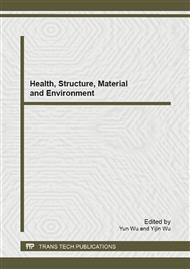p.109
p.116
p.120
p.125
p.130
p.137
p.144
p.149
p.154
Evidence Theory for Uncertainty Quantification of Portal Frames with Semi-Rigid Connections
Abstract:
The buckling load or the equivalent buckling length factor of the portal frame structures is greatly influenced by stiffness of bracing elements and semi-rigid connections. In engineering the problem parameters (geometrical, material, strength, and manufacturing) are given or considered with uncertainties. The initial rotation stiffness uncertainties are taken into consideration. A differential evolution-based computational strategy for the representation of epistemic uncertainty in a system with evidence theory is developed. An uncertainty quantification analysis for the buckling load of portal frames with semi-rigid connections is presented herein to demonstrate accuracy and efficiency of the proposed method.
Info:
Periodical:
Pages:
130-136
Citation:
Online since:
February 2013
Authors:
Price:
Сopyright:
© 2013 Trans Tech Publications Ltd. All Rights Reserved
Share:
Citation:


